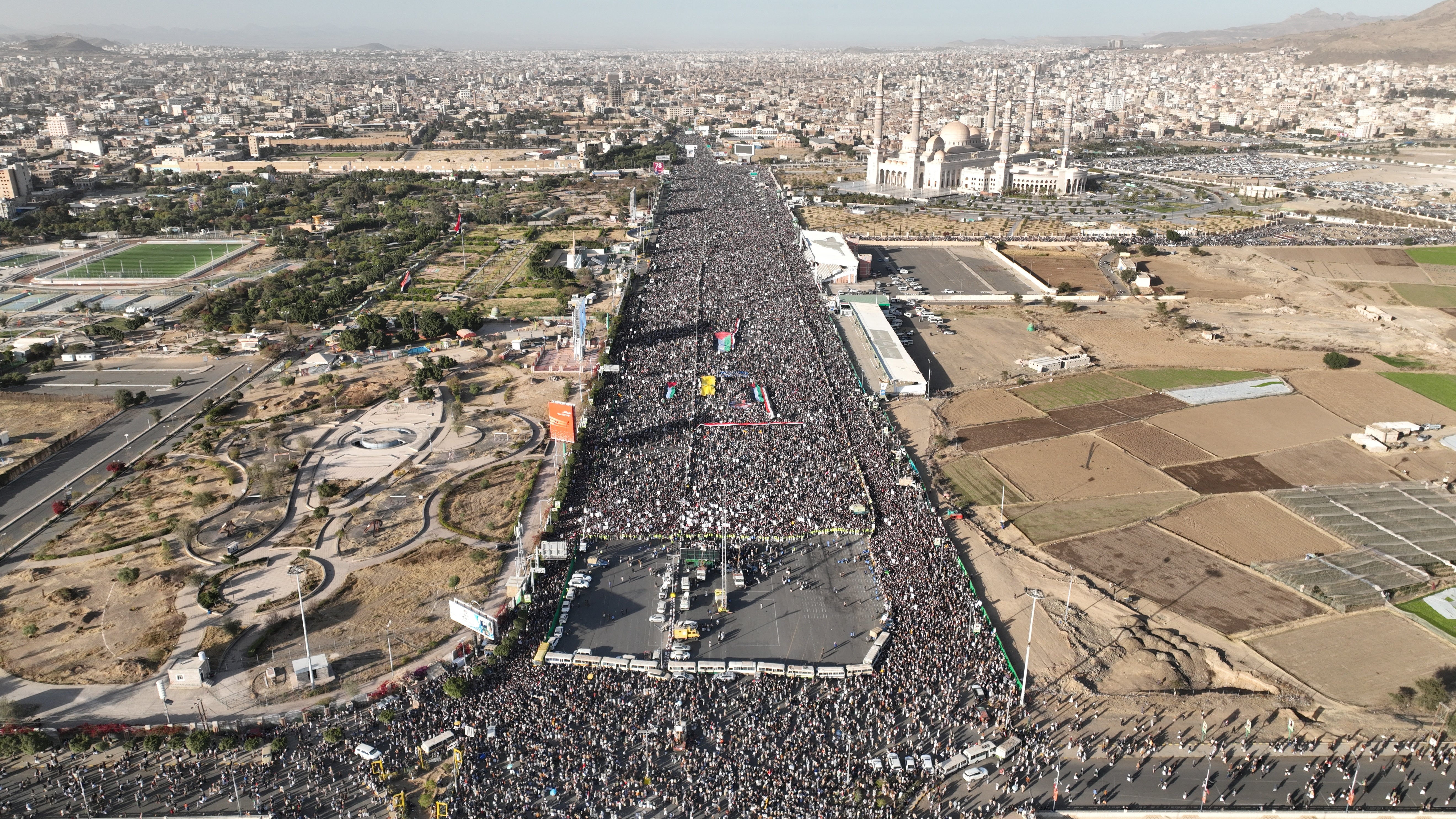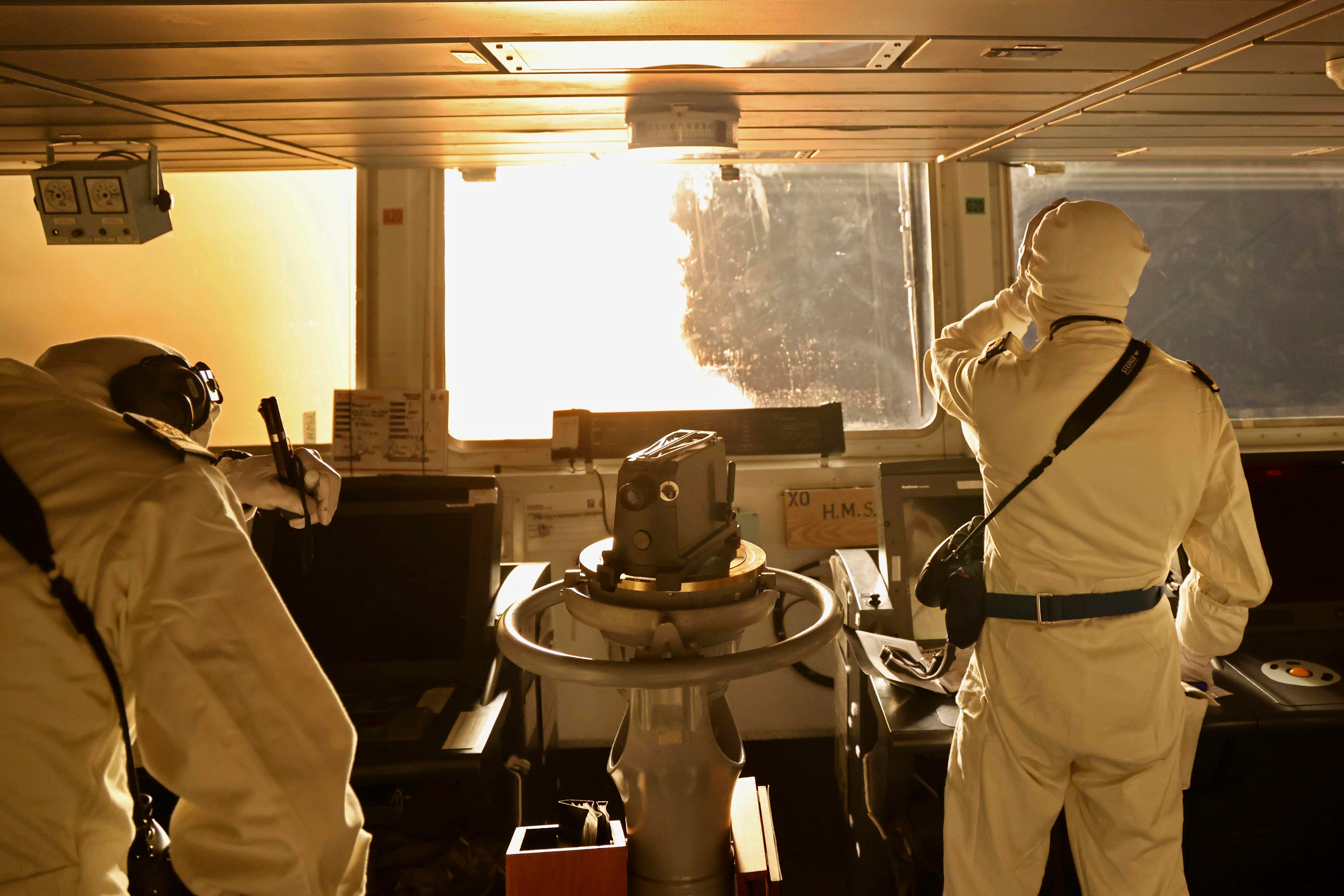A timeline of the Houthi attacks that led to US and UK airstrikes
The US and Britain launched airstrikes against dozens of targets in response to attacks on shipping in the Red Sea
US and British forces launched airstrikes against dozens of targets across Yemen on January 11 in retaliation for months of attacks by the country’s Houthi movement on commercial and military vessels in the Red Sea.
Those attacks, launched by the Iran-backed group in response to Israel’s war in Gaza, have wrought havoc on international shipping and drawn the US and its allies into a regional conflict.
The Pentagon said 60 targets were hit using more than 150 precision-guided munitions.
The Houthis, led by Abdul-Malik al-Houthi, are Shia rebels who have fought Yemen’s government for nearly two decades and have controlled most of the country for half of that time.
The group is part of a so-called “axis of resistance” led by Iran, and defined by its opposition to Israel and the US.
Joe Biden lifted the designation of the Iranian-backed Houthis in Yemen as a global terrorist organisation in 2021 in one of his first acts as president. The group was added to the list by the Trump administration in its final month in power.
Critics of the terror designation argued that it devastated aid and fuel shipments in Yemen, the Arab world’s poorest country, which has often been described as the world’s largest humanitarian crisis.
The following is a timeline of how the conflict between Yemen’s Houthis and the US and its allies began.
7 October
Hamas launches a surprise attack on southern Israel that kills around 1,200 people. It kidnaps around 200 more and takes them back to Gaza. Israel begins its attacks on Gaza that same night.
19 October
Houthis fire four cruise missiles and 15 drones towards Israel in their first act of violence in relation to the Israel-Hamas war. All of the missiles are intercepted by a combination of Saudi air defences and the USS Carney.
27 October
Houthis launch two drones which Israeli officials say were targeted at Israel. Both of them fall in Egypt, where six people are wounded.
28 October
Israel announces that its ground invasion of Gaza has begun.

31 October
Houthis say they launched a “large number” of ballistic missiles and drones towards Israel and warned of more attacks “until the Israeli aggression stops.” The incident triggered air raid sirens in the Israeli tourist resort of Eilat and sent residents running for shelter. Israel said it destroyed an “aeriel target” over the Red Sea.
5 November
Houthis fire an unknown number of missiles towards Israel, all of which are intercepted by Israel.
8 November
Houthis shoot down an American MQ-9 drone that the group claims was “carrying out hostile surveillance and espionage activities in Yemeni territorial waters as part of American military support for Israel.”
14 November
Houthi leader Abdulmalik al-Houthi warns his group will target Israeli ships in the Red Sea and the Bab al-Mandeb Strait. Houthis also fire several missiles towards Israel, which are intercepted by the USS Thomas Hudner.
19 November
Houthis launch a daring helicopter attack to capture the Galaxy Leader, an Israeli-owned and Japanese-operated cargo ship, in the Red Sea. Twenty-five crew members were captured and taken with the ship to Hodeida in Yemen. Houthis released footage of the assault.
22 November
Houthis launch a cruise missile towards Israel. Israeli officials say it is shot down by an F-35 jet.
23 November
US officials say the USS Hudner shoots down drones launched from Yemen.

29 November
The USS Carney intercepts missiles fired from Yemen and shoots down what US officials describe as an “Iranian-made” drone headed towards it.
3 December
US military officials say three commercial vessels come under attack in international waters in the southern Red Sea, as Houthis claim drone and missile attacks on two Israeli vessels in the area. The USS Carney shoots down three Houthi drones.
9 December
Houthis say they will target all ships heading to Israel, regardless of their nationality, if Israel does not allow the delivery of “the food and medicine it needs.”
12 December
Houthis target a Norwegian vessel with a land-based cruise missile, causing a fire to break out on board. In response, Israel announces it will deploy one of its most advanced warships in the Red Sea.

16 December
The Pentagon says the USS Carney shot down 14 drones launched by Houthis over the Red Sea.
18 December
Attacks against commercial vessels in the Red Sea begin to intensify. Houthis announce two more drone attacks targeting cargo vessels in the Red Sea: MSC Clara and Norweigian-owned Swan Atlantic.
23 December
The US shoots down four drones launched from Yemen and headed towards a US destroyer in the Red Sea. Houthis nearly hit a Norwegian oil tanker with a drone and strike an Indian-flagged crude oil tanker.
26 December
Houthis launch a missile attack on an MSC container ship in the Red Sea and an attempt to hit Israel with drones.
28 December
The US shoots down one drone and one anti-ship ballistic missile in the southern Red Sea fired by Houthis. Reuters notes that it is the 22nd attempted attack on international shipping since 19 October.
31 December
US forces kill 10 Houthi naval personnel as they attempted to board a commercial vessel on three boats in the Red Sea.
3 January
The US and 12 allies issue a final warning to Houthis to cease their attacks on vessels in the Red Sea or face military action. “Let our message now be clear: we call for the immediate end of these illegal attacks and release of unlawfully detained vessels and crews,” the countries said. “The Houthis will bear the responsibility of the consequences should they continue to threaten lives, the global economy, and free flow of commerce in the region’s critical waterways.”
4 January
Houthis launch an unmanned surface vessel that detonated a “couple of miles” away US Navy and commercial vessels in the Red Sea, US officials say. Vice Admiral Brad Cooper, the head of US Navy operations in the Middle East, said it was the first time the Houthis had used an unmanned surface vessel since the start of the Israel-Hamas war.
9 January
Houthi forces launch their largest attack to date, with 21 drones and missiles fired towards the Red Sea. All of the projectiles were shot down by British and US forces. The Pentagon says it is the 26th Houthi attack on commercial shipping lanes in the Red Sea since 19 November and British defence secretary Grant Shapps says the situation “cannot be allowed to continue."
11 January
Houthis fire an anti-ship ballistic missile into international shipping lanes in the Gulf of Aden.
11/12 January
The US and Britain carry out air and missile strikes against Houthi targets in Yemen, supported by Australia, Bahrain, Canada, and the Netherlands. The strikes targeted the capital Sana’a, Sa’ada, Hajjah, Hudayadh, and Taiz governorates. The Pentagon says 60 targets were hit using more than 150 precision-guided munitions. "These targeted strikes are a clear message that the United States and our partners will not tolerate attacks on our personnel or allow hostile actors to imperil freedom of navigation," US President Joe Biden said.
— With Reuters
Join our commenting forum
Join thought-provoking conversations, follow other Independent readers and see their replies
Comments